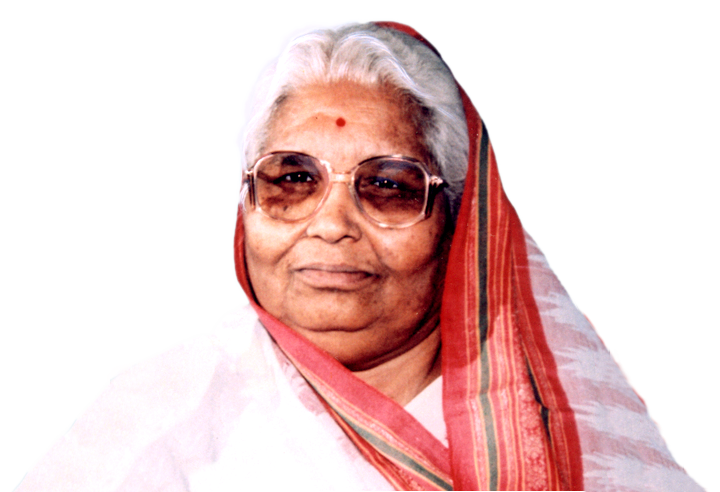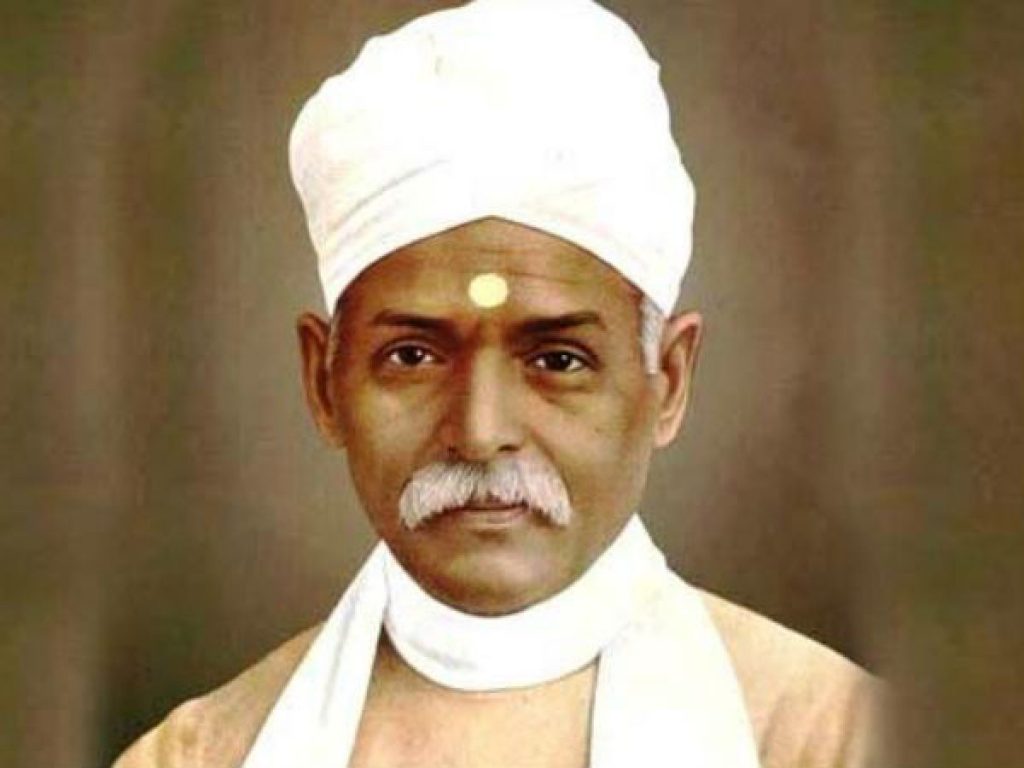Yoga Vidya Niketan (YVN), Member Institute of Indian Yoga Association successfully conducted its annual one-month Yoga Summer Course from May 1 to May 31, 2024. The course ran for one and a half hours daily across 41 physical centers around Mumbai and Navi Mumbai, extending…
Part I
Yugrishi Vedmurti Taponistha, Pt. Shriram Sharma Acharya
Pandit Shriram Sharma Acharya ji belongs to a tradition of divine rishis such as Bhagirath and Dadhichi whose sacrifice and ashirvaads have liberated not only the flow of Mother Ganga, but also the holy waters of dharma itself. His spiritual insights, immense scholarship and the vast philosophical works have defined modern Hindu thought and formed the basis of the socio-religious movement, Gayatri Pariwar.

In his youth, Pandit Shriram Sharma ji fought for India’s freedom alongside Mahatma Gandhi and Kobiguru RabindranathTagore among many other notable personalities and spent long spells in British prisons. Following many decades of intense tapasya (solitary meditation), Pandit Shriram Sharma fought for an emancipation of religious practice. By way of thousands of authoritative translations, he liberated the entire Vedic canon from the hands of the few, and for the first time, gave all people access to genuine sanskaras (sacramental rites) and yagya (holy fire ceremonies). In particular, he established the standard for the prayerful and meditative recitation of the Gayatri mantra. Central to his prophetic vision was a transformation of the human condition through principles of ekta, samta, suchita and mamta (solidarity, equality, sacredness and compassion) thereby ushering in a divine era on earth. The Yugrishi’s intentions for the community he founded were given shape and translated into reality by his spiritual consort and wife, Vandaniyaa Mata Bhagwati Devi Sharma.
He was at once, a devoted saint, spiritual scientist, yogi, philosopher, psychologist, writer, reformer, freedom fighter, researcher, eminent scholar and visionary. Given this it would require several volumes to record his life and works; here we are only giving a glimpse of his angelic personality.

Acharya Shriram Sharma ji (revered as “Pujya Gurudev” by his disciples) was a great devotee of Goddess Gayatri and had attained perfection in realizing its absolute potential. He successfully practiced and mastered the highest kinds of sadhanas described in Vedic tradition. He also deciphered the hidden science of Mantras. He attained absolute knowledge of the philosophy and science of the Gayatri Mantra and yoga. In essence, he perfected a vast range of spiritual disciplines. He pioneered experiments on simple sadhanas, which could easily be practiced by everyone. He initiated programmes of spiritual and intellectual refinement for millions of people without any discrimination of religion, caste, creed, gender or social status. He propagated this knowledge for the enlightenment of people across the globe.
Early years
The divine soul of Shriram Sharma Acharya ji descended on Earth on 20th September 1911 as the son of Pt. Roopkishor Sharma and Mata Dankunvari Devi in Anvalkheda (District Agra, India). The depth in which his saintly heart was concerned for the welfare of the common masses was clearly expressed since his childhood when, as a small boy, he took a brave step of nursing an old, untouchable woman suffering from leprosy against the strong displeasure of his family.

A noted patriot, scholar and founder of the Banaras Hindu University, Pt. Madan Mohan Malaviya initiated him in the worship of Gayatri mantra when he was nine years old. On the auspicious day of Vasant Panchami festival, January 18, 1926, his guru – a great Himalayan yogi – appeared before him in the subtle form arising from the flame of the deepak (lamp) during his Gayatri worship. This sparked the revelation of the divine origin and purpose of him life and enlightened him with the grace and guidance of his guru.
The next 24 years of his life were devoted to 24 Mahapurarcaranas –– each consisting of the rhythmic recitation (japa) of 2.4 million Gayatri Mantra with most strict discipline. There is no parallel to this kind of sadhana ever performed by anyone on Earth to date. At the same time, he also sincerely participated in the freedom movement of India under the noble guidance of Mahatma Gandhi, while continuing with his altruistic services to the society and also attending the family duties. In 1943, he married Ma Bhagwati Devi and ever since, the saintly couple dedicatedly pursued the noble mission for the arousal of the human glory and the revival of the divine culture.
A creator of revolutionary literature
His enlightened wisdom and spirituality had a reach into the depth of human mind. He felt the pains of humanity in his heart. He could therefore identify the root cause of the ailing state of the world today as the crisis of faith, people’s ignorance of the powers of the inner self, and the lack of righteous attitude.
Realizing the potential of literature and its relevance in the present era of intellectual evolution, he had chosen writing as the principal mode towards uprooting the evils, blind faith and illusions from the minds of people while arousing their wisdom, strength and spiritual bliss. Pujya Gurudev initiated the unique movement of Vicara Kranti Abhiyan (thought revolution) from the day he wrote the first issue of the magazine “Akhand Jyoti” in 1937.
By 1960, he had translated all the 4 Vedas, 108 Upanishads, 6 Darshans, 18 Puranas, Yoga Vashishtha, and hundreds of Aranyaks and Brahmanas in Hindi with lucid commentaries to enable the masses to understand the knowledge contained in them. The translation was also aimed at eliminating misconceptions, superstitions and blind customs, which were propagated in the medieval era by deliberate misinterpretations of the Vedas and other scriptures. This invaluable contribution to the world of knowledge and human culture was reverenced by noted savants and saints like Dr. S. Radhakrishnan and Acharya Vinoba Bhave; the distinguished title of “Vedamurti” was conferred upon him in its recognition.

Understanding the psychology of people today, and recognizing the importance of non-relevance in the present times and of the allegoric characters and the background of life depicted in the Puranas, he wrote “Pragya Purana” in the narrative and conversational style of the ancient Puranas to preach the eternal principles of happy, progressive and ideal life with practical guidance relevant to the modern age.

He wrote about 3400 books on almost all aspects of human life, ranging from elucidating the esoteric aspects of spiritual science, consciousness and psychology or providing information on healthy lifestyle and maintaining a cheerful attitude. In his sharp and accurate analysis and guidance we find no place for delusion, confusion or misconception. Through his literature he strikes a chord of empathy in the reader. The message conveyed in the literature touches the reader’s heart with extreme sensitiveness, producing a complete change in his attitude and ideology.

His oral deliberations also manifested similar perfection of eloquence. The simplicity of language in his orations and his ability to connect with the audience had a hypnotizing effect on the listener’s mind. The spiritual radiance and integrity of his character, faultless agreement of his deeds with the principles he preached and the purity of his sentiments added to the motivating power of his pen and voice.
A Global Movement
On the completion of the 24 mahapurascaranas, Pujya Gurudev established Gayatri Tapobhumi at Mathura (India) in 1953. He organised a grand Gayatri Yagya in 1958, which served as a base to launch the Yug Nirman Yojna, a global movement for moral, cultural, intellectual and spiritual evolution. The objectives of this movement are to reform the individual, the family and social values of mankind and to change the current ideologies and concepts of morality and social structure for a better tomorrow.

Through various activities at Mathura, including the performance of yagyas on large scale, he gathered a team of dedicated men and women. Thus the organisation called “Gayatri Pariwar” was born.
As per the plans projected under the Yug Nirman Yojna, the mission has contributed to the reconstruction of the personal, familial and social aspects of human life. Its major activities include mass awareness and education on cultural values through small and large scale Gayatri Yagyas and collective projects of social reformation with people’s voluntary participation. Propagation of ideal marriages without dowry and extravagant shows has been a significant and trend-setting achievement, especially in the Indian context. Other achievements include upliftment of the social status of women and self-reliant development of villages.
The establishment of Shantikunj
The period of 1971 to1990 witnessed remarkable accomplishments of Pujya Gurudev’s life on multiple facets. He climbed the arduous and mystic heights of the Himalayas several times and stayed there for specific sadhnas as per the guidance of his guru. In 1971, he instituted the mission’s headquarters at Shantikunj (Haridwar, India) as an academy for moral and spiritual awakening and training. Here he began the revival of ancient spiritual disciplines that were considered hallmarks of Indian Culture.
Gurudev pioneered the resurrection of the Rishi culture by simultaneous renaissance and expansion of the reformative and constructive endeavours of all the rishis of the Vedic ages. He reviewed the immortal contributions of the divine culture of India to the rest of the world and endeavoured nurturing and re-establishing the foundational elements of the Indian Culture and the roots of its divine nature in new scientific light through several activities of the Gayatri Pariwar.
As a part of his intensive study of the Indian culture and religious philosophy, he rediscovered the sociological and psychological importance of pilgrimage. He taught us how the ancient glory and the real purpose of the tirthas (sacred places of pilgrimage) could be revived in the present times for the welfare of the masses.
The Dev Sanskriti Vishwavidyalaya (University) the educational vision of Gurudev was established in the year 2002 and since then is setting up new benchmarks by bringing together modern day education and the values of Gurukul.
Dev Sanskriti Vishwavidyalaya (DSVV)
Dev Sanskriti Vishwavidyalaya (University). DSVV is based on the teachings and vision of, Pt. Shri Ram Sharma Acharya Ji, who was a ground-breaking scholar and one of the greatest philosophers of recent times in India. His education philosophy was to provide a free education to the deserving students with the contribution of the society and in turn, the qualified students should return the learnt skills back to the society in the form of a mandatory social internship. The University is quickly gaining an international renown for its dynamic blend of ancient and modern as well as due to its unique approach to the personal and intellectual development of its students.

The lush green 90-acre campus is set in the Himalayan surroundings and is both beautiful and state-of-the-art. In and amongst herbal gardens, Acupressure Park and a functioning dairy farm with an attached unit of self-employment center, the fully Wi-Fi campus includes computer labs, state of the art libraries, laboratories, and a multi-modal Poly-Clinic. We are also the proud host of world famous annual International Festival on Yoga, Culture and Spirituality.

In addition to offering undergraduate, post-graduate and post-doctoral programs in a wide array of schools such as School of Indology, School of Humanities, Social Sciences and Foundation courses, School of Technology, Communication and Management, School of Biological Sciences and Sustainability which offers variety of programs such as Animation and Media Studies, Journalism and Mass Communication, Computer Science, Yoga and Human Consciousness, Holistic Health, History and Culture, Music, Tourism, Rural Entrepreneurship and Development, Environmental Science, Linguists, Humanities, Education, Psychology etc., DSVV specializes in the character development of its students through fostering an uplifted lifestyle based on the spiritual practices of east and the west. The result is well-rounded and dynamic graduates eager to channelize their skills towards serving the needs of society.
The University has more than 60 International Collaborations with esteemed International Institutions in USA, UK, Germany, Italy, Latvia, Lithuania, Indonesia, China, Japan, Russia, Spain, Poland, Portugal and Korea. Our University is also a member of the Association of Commonwealth Universities (ACU) as well as Association of Indian Universities (AIU) and proudly host high number of International students from more than 14 nationalities in the current academic semester. We are also hosting the Asia’s first center for Baltic Culture and Studies and also have a Centre for Tai Chi, which is in collaboration a Chinese University.
















